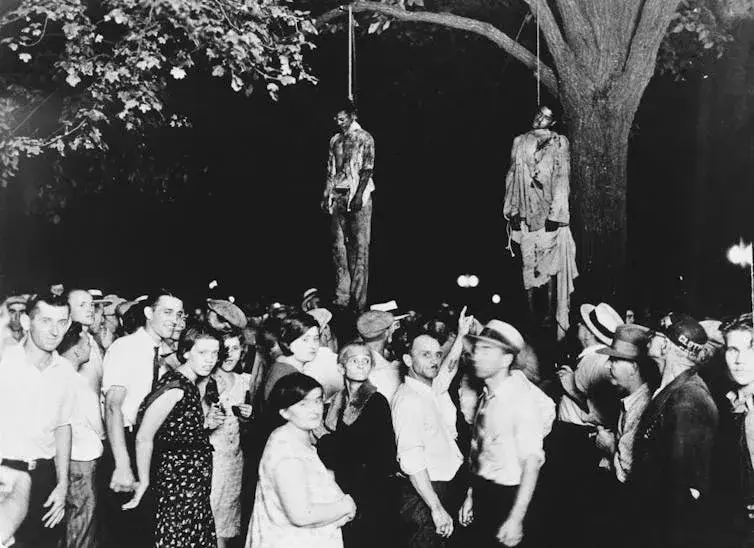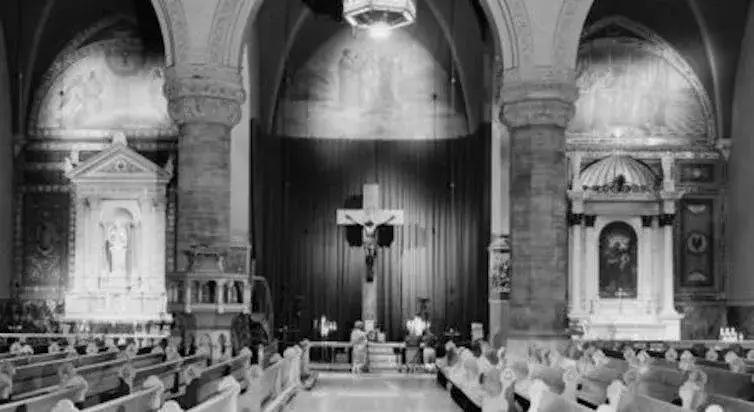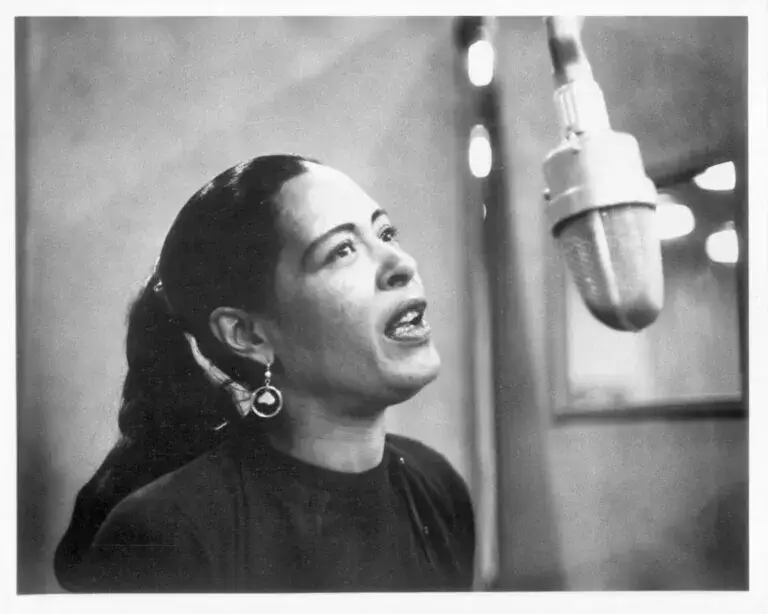Billie Holiday’s Legacy and Influence
Billie Holiday, a towering figure in jazz history, passed away on July 17, 1959, at the age of 44. After being denied treatment at a charity hospital due to evidence of drug use, Holiday was left unattended for hours in a hospital hallway. Her estate at the time was meager, amounting to just 70 cents and a roll of bills from a final interview. Despite these tragic circumstances, Holiday is now celebrated as one of the most influential artists of the 20th century. Time magazine hailed her 1939 recording of “Strange Fruit” as the song of the century, acknowledging its profound impact on addressing historical injustices.

The Origins and Impact of “Strange Fruit”
“Strange Fruit,” written by Abel Meeropol, a Jewish teacher and songwriter, was inspired by a haunting photograph of a lynching. The song’s lyrics vividly depict the horror of racial violence: “Black body swinging in the Southern breeze / Strange fruit hanging from the poplar trees.” Holiday’s interpretation of the song remains as powerful today as when it was first recorded. Samuel Grafton, a syndicated columnist, noted that the song’s impact was profound, likening its effect to the end of a pretentious game.
Religious and Secular Influences
Holiday’s recording of “Strange Fruit” reflects the intersection of religious and secular influences. Meeropol, a secular Jew and labor activist, saw parallels between anti-Black violence and the persecution of Jews. His poetry often linked these struggles, resonating with both Jewish and Black American experiences of oppression. The song emerged at a time of significant historical events, including Kristallnacht, which marked a pivotal moment in the Holocaust.
Religious Imagery and Symbolism
The song’s unflinching portrayal of racial violence aligns with religious themes of suffering and solidarity. For many Black Christians, Jesus’ suffering and crucifixion are seen as reflections of their own experiences with injustice and oppression. The “filled” cross in Catholic tradition, which depicts Jesus’ suffering, resonates with the themes in “Strange Fruit” by emphasizing the ongoing nature of suffering and injustice.

Holiday’s Personal Connection
Holiday connected deeply with the song’s themes, particularly because of her own experiences with racial prejudice and loss. She saw “Strange Fruit” as a poignant representation of the struggles faced by her family and community. Her rendition of the song, which she continued to perform until the end of her life, stands as a testament to her commitment to addressing racial violence.
Cultural Resonance and Continuing Legacy
Holiday’s performance of “Strange Fruit” was not just a musical expression but an act of solidarity with those suffering from racial violence. Her Harlem apartment served as a refuge for those in need, reflecting her deep empathy and commitment to social justice. The song’s power and relevance continue to resonate, as evidenced by Bruce Springsteen’s inclusion of it in his playlist following George Floyd’s murder. Springsteen’s selection underscores the enduring impact of Holiday’s work and the ongoing struggle for justice.
FAQ
1. What is the significance of Billie Holiday’s recording of “Strange Fruit”?
Billie Holiday’s recording of “Strange Fruit” is celebrated for its powerful and unflinching depiction of racial violence. It has been recognized as a major cultural and historical statement about injustice.
2. Who wrote “Strange Fruit” and what inspired it?
“Strange Fruit” was written by Abel Meeropol, a Jewish teacher and songwriter. The song was inspired by a photograph of a lynching, reflecting Meeropol’s response to racial and anti-Semitic violence.
3. How does “Strange Fruit” connect with religious themes?
The song reflects religious themes of suffering and solidarity. Meeropol’s Jewish background and the song’s portrayal of racial violence connect with Christian themes of Jesus’ suffering and the ongoing nature of oppression.
4. What was Billie Holiday’s personal connection to the song?
Holiday identified with the song’s themes due to her own experiences with racial prejudice and loss. She saw “Strange Fruit” as a representation of her struggles and continued to perform it throughout her life.
5. How has “Strange Fruit” influenced contemporary culture?
The song remains a powerful symbol of racial injustice and has influenced various artists and social movements. Its legacy continues to resonate, highlighting the ongoing fight for justice and equality.


